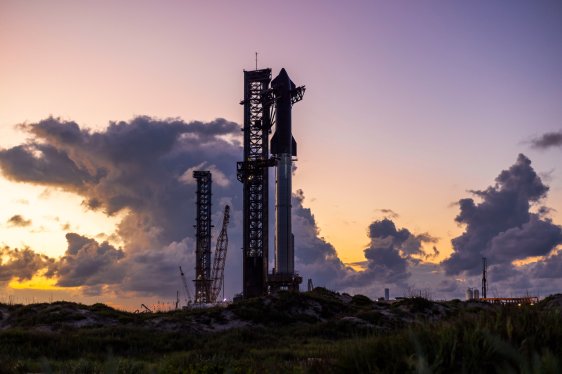Demonstrating Payload Deployment for the First Time
SpaceX is taking a significant leap forward in its Starship test flight program, with the next launch expected to showcase payload deployment for the first time. The company has been working tirelessly to perfect its reusable rocket technology, and this milestone marks a crucial step towards achieving its ambitious goals.
Payload Simulators: A Key Component of the Test Flight
The payload in question will be 10 Starlink ‘simulators’ that mimic the size and weight of the next-gen satellites SpaceX plans to deploy using Starship. These model spacecraft will travel on the same trajectory as the upper stage, also known as Starship, and splash down in the Indian Ocean.
A Glimpse into the Future: V3 Satellites
The operational version of these satellites, called V3, is likely to be the first real payload that Starship flies. The introduction of V3 satellites marks a significant upgrade from the current V2 Mini spacecraft, with each satellite boasting more than 10 times the downlink and 24 times the uplink capacity.
Reducing Costs per Satellite Launched
With the incredible payload capacity of Starship, SpaceX plans to deploy 60 V3 satellites per launch, adding 60 terabits per second of capacity to the Starlink network. This unprecedented capability will revolutionize the way satellite constellations are deployed and maintained, reducing costs per satellite launched.
Upgrades to the Rocket: A Boost in Reliability and Performance
In a blog post ahead of the seventh test launch, SpaceX announced a slew of upgrades to the rocket. These improvements include enhancements to the propulsion system, avionics, and heat shield, which are expected to boost reliability and performance.
The Attempt to "Catch" the Super Heavy Booster
During this test flight, SpaceX will also attempt to ‘catch’ the Super Heavy booster, a feat that the company accomplished for the first time during the fifth test in October. This remarkable achievement demonstrates the company’s commitment to innovation and pushing the boundaries of what is possible.
The Importance of Starship and Its Payload Capabilities
Starship’s payload capabilities are a game-changer for SpaceX’s plans to rapidly deploy its Starlink satellite constellation. The introduction of V3 satellites will enable the company to expand its network more efficiently, while reducing costs per satellite launched.
A Step Towards Ambitious Goals
The upcoming test flight marks a significant step towards achieving SpaceX’s ambitious goals. As the company continues to push the boundaries of space exploration and technology, we can expect even more remarkable achievements in the future.
SpaceX’s Starship: A Breakdown of Its Capabilities
- Payload Capacity: 60 V3 satellites per launch
- Satellite Capacity: More than 10 times the downlink capacity and 24 times the uplink capacity compared to V2 Mini spacecraft
- Network Capacity: 60 terabits per second added to the Starlink network
The Future of Space Exploration
SpaceX’s commitment to innovation and pushing the boundaries of what is possible has far-reaching implications for space exploration. As we continue to push towards a future where humanity becomes a multi-planetary species, companies like SpaceX will play a crucial role in shaping the course of history.
Conclusion
The upcoming test flight of Starship marks an exciting milestone in the company’s pursuit of innovation and excellence. With its impressive payload capabilities and upgraded rocket technology, SpaceX is poised to revolutionize the way satellite constellations are deployed and maintained. As we look towards the future, one thing is clear: SpaceX’s ambitious goals will have a profound impact on our understanding of space exploration and beyond.
Sources
By submitting your email, you agree to our Terms and Privacy Notice.
